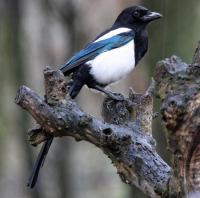- Home
- FAQs
- Customer Video Gallery
- Customer Photo Gallery
- Bird Facts
- Bird Food Blog
- Bird Information
- Feeding Advice
- Small Animal Information
- A to Z of Guinea Pigs
- A to Z of Hamsters
- A to Z of Rabbits
- Basic Care for Guinea Pigs
- Basic Care for Hamsters
- Basic Care for Rabbits
- Basic care for Chinchillas
- Basic care for Ferrets
- Basic care for Gerbils
- Basic care for Mice
- Basic care for Rats
- Buying a Healthy Small Animal
- Does your Reptile need a Licence
- Equipment for Ferrets
- Equipment for Hamsters
- Equipment for Mice
- Equipment for your Chinchilla
- Equipment for your Gerbil
- Equipment for your Guinea Pig
- Equipment for your Rabbit
- Keeping a House Rabbit
- Dog Information
- Cat Information
- Customer Information
- Fat Balls
- Suet Pellets
- Straights
- Seed Mixes
- Suet Treats
- Mealworms
- Bird Feeders
- My Account

| Scientific Name | Alcedo atthis |
| Breeding | late April |
| Fledge Days | 23-26 |
| Incubation Days | 20-21 |
| Lifespan | 2 years |
| Number of Clutches | 1-2 |
| Number of Eggs | 5-7 |
| Size | 16-17cm |
| Weight | 40g |
| Wingspan | 24-26cm |
Bird Family : Kingfishers
Kingfisher Facts - Information About Kingfisher
Kingfisher - Alcedo Atthis
A flash of blue, gone in an instant, that’s the usual view of these fantastic little birds. The kingfisher must surely grab the prize for the most brightly coloured common British bird.
Made up of beautiful blues, turquoise, greens, orange and white, it is an absolutely stunning little bird. It inhabits clear running streams, rivers and ponds with overhanging vegetation.
Identification:
Adult
- Adults are identical except for the bill colour, the bill is all dark in males, the female has a red base to the lower mandible.
- Kingfishers are small birds, around 15cm from tip of tail to tip of bill.
- They are very short tailed and often appear ‘bull headed’ and perch very upright on very short red legs.
- The upperparts are a fabulous shining iridescent blue, the wings have a turquoise cast and the crown combines the two.
- The head shows a thick orange eyestripe, blue moustache, white neck patch and white throat and a large dagger like bill.
- The whole of the underparts are bright vivid orange, incredible!
- The Kingfisher is a shy bird, often perching in the shadows and normally difficult to observe.
- More often than not you will see an electric blue flash as a bird is disturbed and flies rapidly away from you.
- The flight is very fast and low with extremely rapid wingbeats.
Juvenile
- The young birds are very similar to adults, the wings and crown tend to be more greeny blue and the orange underparts are not as bright as in the adult birds.
Status and Distribution
The Kingfisher is a reasonably common breeding resident in the UK with around 5000 pairs. The Kingfisher occurs in all counties throughout the UK and Ireland but is absent in northern Scotland.
In winter numbers increase slightly as some continental birds come to winter here and
many of our resident birds move to the coast as cold winters freeze their usual haunts.
Habitat/Food
Kingfishers are water specialists, they nest close to clean rivers, streams, lakes and ponds. In winter they will move to other bodies of water like canals or coastal lagoons.
They feed almost exclusively on fish, but will also take small invertebrates
Song/Call
Call note; most often a hard loud penetrating ‘screeeee’’ generally given in flight.





